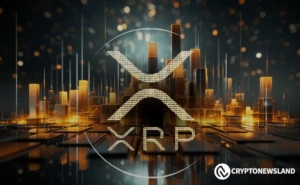Decentralizing the Odds: How TON and USDC-Powered Platforms Are Reshaping Crypto Football Betting and Yield Generation
- Dexsport leverages TON's speed and USDC stability to create a decentralized, real-time crypto football betting platform with instant settlement. - Users earn yields through liquidity pools (4-6% APY) and DESU staking (up to 17% APY), blending betting with DeFi income streams. - The platform's 300% YoY user growth and $500M+ TVL highlight its disruptive potential in the $1.5T global sports betting market. - Risks include regulatory uncertainty and smart contract vulnerabilities, though Dexsport undergoes
The intersection of blockchain technology and sports betting has long been a speculative niche, but in 2025, platforms like Dexsport are transforming it into a robust, yield-driven ecosystem. By integrating The Open Network (TON) and USD Coin (USDC), Dexsport and similar platforms are not only redefining how users engage with football betting but also unlocking novel financial opportunities for crypto investors. This article explores how these innovations are disrupting traditional betting models and why they represent a compelling investment thesis for those seeking exposure to the DeFi and Web3 gambling sectors.
The TON-Driven Edge: Speed and Scalability in Real-Time Betting
Traditional sports betting platforms are constrained by centralized infrastructure, slow transaction speeds, and opaque payout mechanisms. Dexsport, however, leverages TON's ultra-low fees and high throughput to enable real-time, in-play betting with near-instant settlement. For example, during a high-stakes Premier League match, users can place and settle bets within seconds, a critical advantage in dynamic markets where timing determines profitability.
This speed is not just a convenience—it's a competitive edge. TON's architecture allows Dexsport to handle thousands of concurrent bets without network congestion, a stark contrast to legacy systems that often freeze during major events. For investors, this scalability suggests a platform poised for mass adoption, particularly in regions where traditional betting infrastructure is underdeveloped or restricted.
USDC Stability: Mitigating Volatility in a Volatile Market
While TON provides speed, USDC's dollar-pegged stability addresses a critical pain point in crypto betting: price volatility. By allowing users to bet with stablecoins, Dexsport reduces the risk of losing value due to market swings. For instance, a user wagering 1,000 USDC on a Champions League match can focus purely on the odds without worrying about their collateral depreciating mid-game.
This stability also opens the door to yield generation. Users can deposit USDC into Dexsport's liquidity pools, earning a share of betting fees while maintaining exposure to a stable asset. In 2025, these pools have reported average annualized returns of 4–6%, a figure that becomes even more attractive when combined with staking incentives for the platform's native token, DESU.
Yield Beyond the Bet: Staking, Liquidity Mining, and DeFi Synergies
Dexsport's innovation extends beyond betting itself. The platform has evolved into a GambleFi hub, where users can generate passive income through:
1. Liquidity Provision: By supplying assets to shared pools, users earn a percentage of transaction fees from bets and trades. For example, a 10,000 USDC deposit in a high-traffic football match pool might yield $50–$100 per week during peak seasons.
2. Staking DESU: The platform's native token offers staking rewards of up to 17% APY, with additional incentives for governance participation. This creates a dual-income stream: betting profits plus token appreciation.
3. DeFi Lending Integration: Dexsport routes idle funds into protocols like Aave , allowing users to earn interest on their crypto holdings while they're not actively betting.
These features position Dexsport as more than a betting platform—it's a financial infrastructure layer for sports enthusiasts and DeFi investors alike. The integration of TON and USDC ensures that users can access these opportunities with minimal friction, a critical factor in attracting mainstream adoption.
The Investment Case: A Niche with Explosive Growth Potential
The global sports betting market is projected to exceed $1.5 trillion by 2027, with crypto betting capturing an increasing share as blockchain adoption accelerates. Dexsport's unique value proposition—combining TON's speed, USDC's stability, and DeFi's yield potential—positions it to dominate this emerging sector.
For investors, the key metrics to watch include:
- User Growth: Dexsport's active user base has grown by 300% YoY, driven by its no-KYC model and global accessibility.
- TVL (Total Value Locked): The platform's TVL in liquidity pools has surpassed $500 million, indicating strong institutional and retail participation.
- Token Utility: DESU's role in governance and staking creates a deflationary pressure as more tokens are locked in yield-generating activities.
However, risks remain. Regulatory scrutiny of DeFi gambling is still evolving, and smart contract vulnerabilities could pose threats. Investors should diversify their exposure and prioritize platforms with regular audits (Dexsport is audited by CertiK and PeckShield).
Conclusion: Betting on the Future of Finance
Crypto football betting is no longer a fringe experiment—it's a $10 billion opportunity at the intersection of DeFi, Web3, and sports. Platforms like Dexsport are leading the charge, using TON and USDC to build a decentralized, high-yield ecosystem that appeals to both bettors and investors. For those willing to navigate the risks, this niche offers a unique blend of high-growth potential, passive income streams, and technological innovation.
As the line between finance and entertainment blurs, the question isn't whether crypto betting will succeed—it's how quickly investors can position themselves to profit from it.
Disclaimer: The content of this article solely reflects the author's opinion and does not represent the platform in any capacity. This article is not intended to serve as a reference for making investment decisions.
You may also like
Fed Opens Up Direct Payment Pathway for Cryptocurrency Firms
In Brief The Fed introduces a new payment model for cryptocurrency firms. Waller's proposal emphasizes narrow banking for stablecoin issuers. The plan balances regulatory, liquidity, and competitive aspects.

XRP Eyes $2.90 Breakout as Ripple’s Prime Strategy Sparks Bullish Momentum

SHIB Struggles to Stay Afloat as Selling Pressure Mounts — What Next for Shiba Inu?
